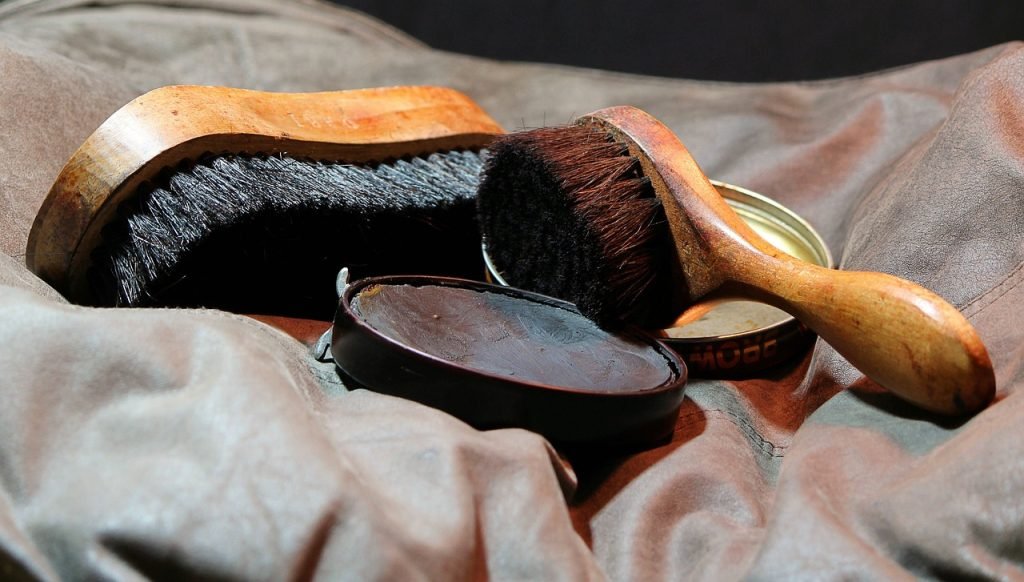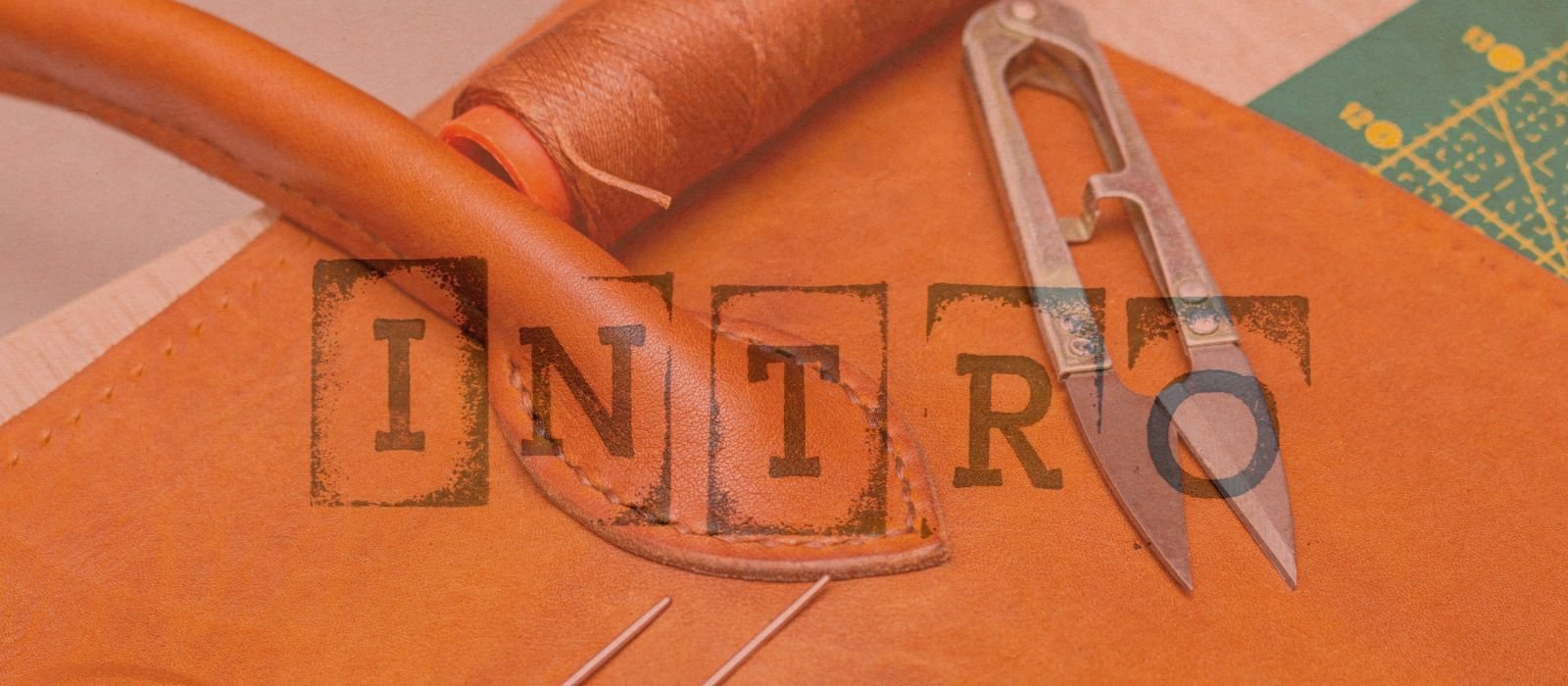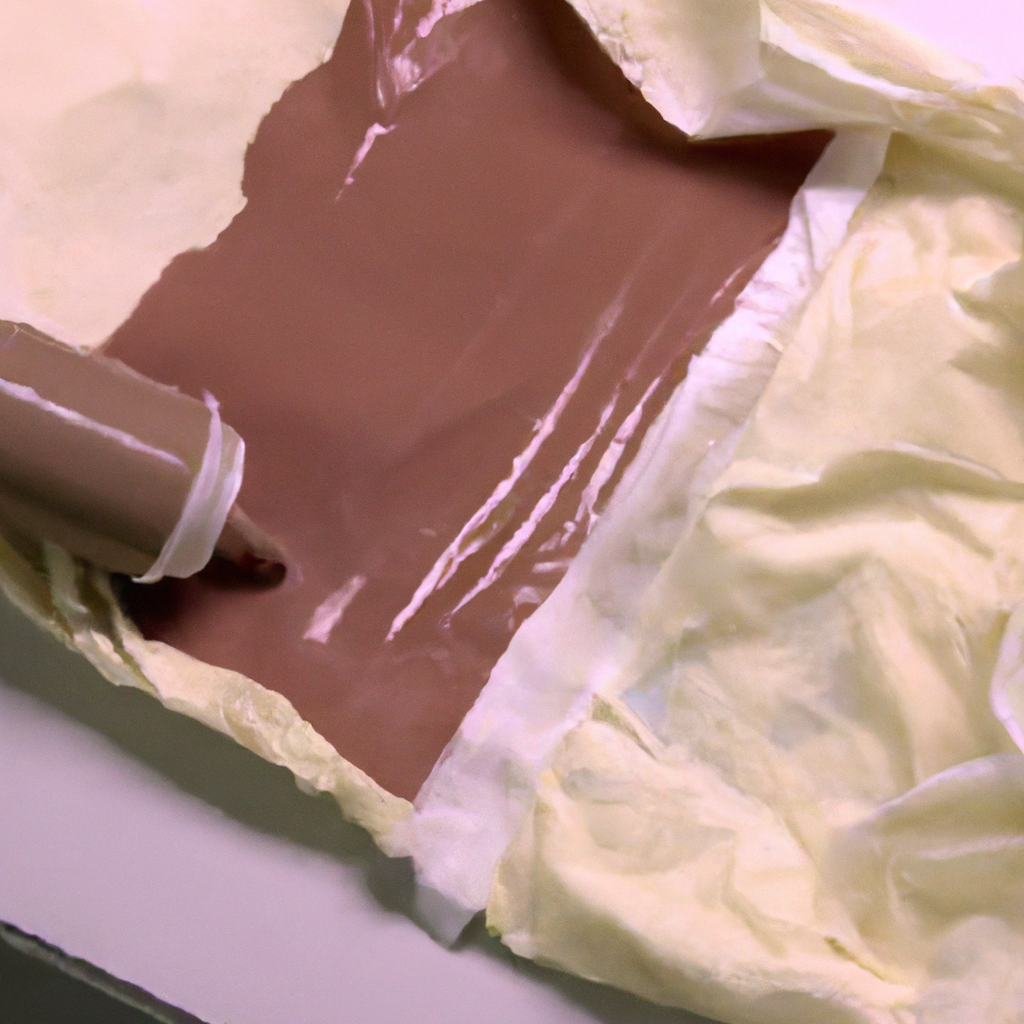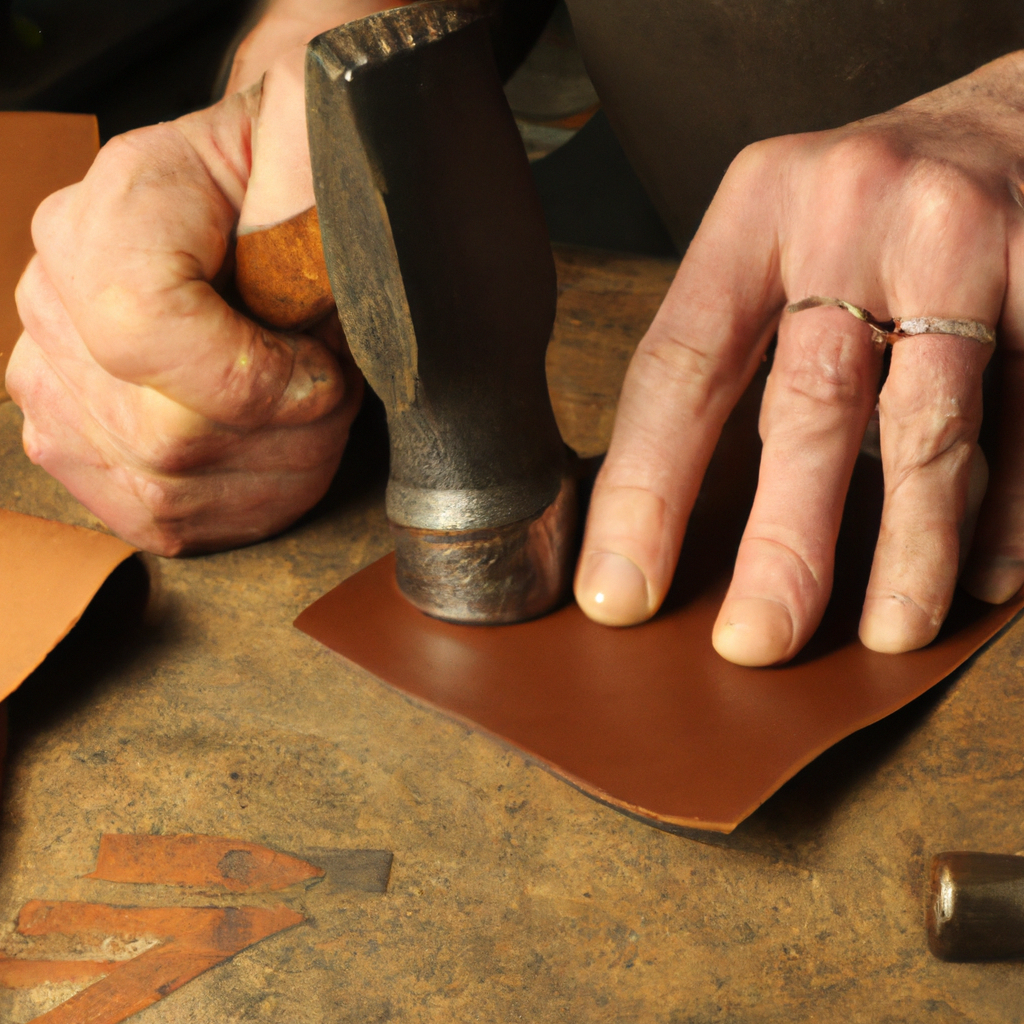Leather is a luxurious and versatile material that enhances the style and durability of various products. However, despite its resilience, leather can be susceptible to damage if mishandled. From improper cleaning techniques to exposure to harsh elements, there are several common mistakes that can lead to irreparable harm. In this article, we will explore some of these handling mistakes, providing you with valuable insights and tips on how to prevent them and ensure the longevity of your leather goods. So, whether you’re a seasoned leather connoisseur or just beginning to appreciate the beauty of this material, read on to discover how to avoid common missteps that may jeopardize your leather’s condition.

Unprotected storage
Leather is a durable and versatile material, but it is not invincible. Improper storage can lead to significant damage over time. Here are some common mistakes to avoid when it comes to storing your leather items:Exposing leather to direct sunlight
Did you know that prolonged exposure to direct sunlight can cause leather to fade and dry out? The harmful UV rays can penetrate the surface of the leather, causing it to lose its natural luster and become brittle. To prevent this, it’s essential to store your leather items away from windows or use protective curtains or blinds to block out the sun’s rays.Storing leather in overly humid or dry environments
Leather needs the right balance of moisture to remain in good condition. Storing leather in environments that are either too humid or too dry can have detrimental effects. In high humidity, leather can become moldy, while in dry conditions, it can crack and lose its suppleness. It’s crucial to find a storage location with optimal humidity levels, ideally between 40% and 50%.Placing leather items near heat sources
Heat can cause leather to dry out and shrink, leading to cracks and deformities. Therefore, it’s important to keep your leather items away from direct sources of heat, such as radiators, fireplaces, or heaters. The heat can strip the leather of its natural oils, making it more vulnerable to damage. Opt for a cool and well-ventilated storage area for your leather belongings to maintain their quality.Improper cleaning
Cleaning leather is a necessary task to keep it looking its best, but it’s essential to do it properly to avoid causing damage. Here are some mistakes to be mindful of when cleaning your leather items:Using harsh chemical cleaners on leather
When it comes to cleaning leather, less is more. Harsh chemical cleaners can strip the leather of its natural oils and cause it to become dry and cracked. It’s best to use mild, leather-specific cleaners that will remove dirt and stains without damaging the material. Always read the label and ensure that the cleaner is suitable for use on leather before applying it.Scrubbing or rubbing leather vigorously
Leather is a delicate material that can be easily scratched or scuffed. When cleaning your leather items, avoid scrubbing or rubbing them vigorously. Instead, use a soft, lint-free cloth or a gentle brush and apply light pressure. This will help to remove dirt and grime without causing any unnecessary damage to the leather’s surface.Not testing new cleaning products on a small, hidden area first
Before using any new cleaning product on your leather items, it’s crucial to test it on a small, inconspicuous area first. This will allow you to ensure that the product does not cause any discoloration or damage to the leather. Apply a small amount of the cleaner to the test area and gently wipe it away. If there are no adverse effects, you can proceed to clean the rest of the leather using the product.Neglecting regular conditioning
Leather needs to be nourished and moisturized to keep it in optimal condition. Neglecting to condition your leather items regularly can lead to dryness, cracking, and a loss of its natural sheen. Here are some mistakes to avoid when it comes to conditioning leather:Failing to apply leather conditioner periodically
Leather conditioner helps to replenish the natural oils and moisture that leather loses over time. Failing to apply a quality leather conditioner periodically can leave the leather dry and prone to damage. It’s recommended to condition your leather items at least once every six months, or more frequently if they are exposed to harsh conditions or heavy use.Not using the appropriate type of conditioner for the specific leather
Different types of leather require different types of conditioners. Using the wrong conditioner can potentially damage the leather rather than protect it. Before applying any conditioner, make sure to check the manufacturer’s recommendations or consult a leather care specialist to determine the appropriate type of conditioner for your specific leather item.Skipping conditioner application in high-use areas
The areas of leather items that experience the most friction and wear, such as seats, armrests, or handles, require extra attention and conditioning. Skipping conditioner application in these high-use areas can result in premature wear and tear, leading to unsightly cracks and damage. Make sure to pay special attention to these areas and condition them more frequently to maintain their longevity.Ignoring stains and spills
Accidents happen, and leather is not immune to stains and spills. Ignoring stains and spills on your leather items can lead to permanent discoloration and damage. Here are some mistakes to avoid when dealing with stains and spills on leather:Allowing liquids to sit on leather without immediate cleaning
When a liquid spills onto your leather item, it’s crucial to act quickly and clean it up immediately. Allowing the liquid to sit on the leather for an extended period can result in the liquid seeping into the leather fibers, causing permanent stains. Take a clean cloth or paper towel and gently blot the spill to absorb as much liquid as possible. Then, follow up with a proper leather cleaner to remove any remaining traces.Using water on oil-based stains or oil on water-based stains
Using the wrong cleaning agent for a stain can make the situation worse. If you have an oil-based stain on your leather, avoid using water as it can cause the oil to spread and penetrate further into the leather. Instead, use an oil-based cleaner specifically designed for leather. Conversely, for water-based stains, avoid using oil or solvent-based cleaners as they may leave residue or discoloration. Stick to using water-based leather cleaners for water stains.Using excessive force when trying to remove stains
Leather is a delicate material, and using excessive force when trying to remove stains can damage its surface. Scrubbing or rubbing the stain vigorously can cause discoloration, texture change, or even scratches. Instead, use a soft cloth or sponge and apply gentle, circular motions to lift the stain. If the stain persists, it’s best to seek professional help to ensure proper stain removal without further damaging the leather.
Using improper storage containers or covers
Proper storage containers and covers are essential for maintaining the quality and longevity of your leather items. Here are some mistakes to avoid when it comes to choosing containers and covers for your leather belongings:Storing leather items in plastic bags or airtight containers
Leather needs to breathe to maintain its optimal condition. Storing leather items in plastic bags or airtight containers can create a damp environment that promotes mold growth and can cause the leather to deteriorate. Opt for breathable fabric storage bags or simply store leather items in a cool, dry area free from excessive moisture.Using non-breathable covers for leather furniture or garments
Similar to storing leather items in plastic bags, using non-breathable covers such as vinyl or nylon for leather furniture or garments can trap moisture and lead to mildew growth. It’s best to choose breathable covers made of natural fabrics such as cotton or linen to allow air circulation and prevent the buildup of moisture.Storing leather items in dusty or dirty spaces
Dust and dirt particles can accumulate on the surface of leather and work their way into the crevices, causing abrasions and scratches. To avoid this, make sure to store your leather items in clean and dust-free spaces. Regularly dusting or wiping down your leather items before storage can also help prevent the buildup of dirt and grime.Neglecting to protect leather from pets
Pets can bring joy and companionship into our lives but can also unintentionally damage our leather items. Here are some common mistakes to avoid when it comes to protecting leather from our furry friends:Allowing pets to scratch or chew on leather items
Pets, especially cats and dogs, may be tempted to scratch or chew on leather furniture, shoes, or bags. This can result in unsightly scratches, tears, or even irreparable damage. It’s crucial to train your pets not to engage in destructive behavior and provide appropriate scratching posts or chew toys as alternatives to redirect their attention.Not covering leather furniture or car seats when pets are present
Prevention is key when it comes to protecting your leather furniture or car seats from pet-related damage. Using a washable, protective cover can help create a barrier between your pets and the leather surface. This will prevent scratches, stains, and other forms of damage caused by your pet’s paws, claws, or accidents.Failing to remove pet hair from leather surfaces regularly
Pet hair can easily accumulate on leather surfaces and cause them to look untidy and unclean. Leaving pet hair on leather for extended periods can lead to it becoming embedded in the leather’s pores, making it more difficult to remove. Make it a habit to remove pet hair regularly using a lint roller or a soft brush designed for pet hair removal to keep your leather items looking their best.Using sharp or abrasive objects near leather
Leather is susceptible to scratches and damage from sharp or abrasive objects. To prevent unnecessary harm to your leather items, avoid the following mistakes:Accidentally scratching or nicking leather with sharp items
Be cautious when handling sharp objects near leather items, such as knives, scissors, or keys. Accidental scratches or nicks can occur, leaving permanent marks on the leather’s surface. Take extra care when placing or retrieving items from pockets or bags to avoid inadvertently damaging the leather.Rubbing leather against rough surfaces
Rubbing leather against rough surfaces, such as concrete or rough-textured fabrics, can lead to scratches or abrasions on the leather. To prevent this, always be mindful of the surfaces you place your leather items on and avoid dragging or rubbing them against rough materials.Wearing accessories or clothing with sharp metal details that could damage leather
Metal accessories on clothing, belts, or jewelry can pose a risk to your leather items. Sharp metal details, such as studs or buckles, can scratch or snag the leather, causing irreversible damage. When wearing leather items or accessories, make sure to choose ones with smooth, rounded metal parts that won’t harm the leather.Misusing or mishandling leather items
Proper handling and usage are essential to maintain the quality and longevity of your leather items. Here are some mistakes to avoid when it comes to using and caring for your leather possessions:Overloading leather bags or wallets beyond their weight capacity
Leather bags and wallets have weight limits, and overloading them can strain the leather, causing it to stretch, warp, or tear. Be mindful of the weight you carry in your leather accessories and avoid exceeding their recommended capacity. This will help ensure that the leather retains its shape and durability over time.Not using appropriate protective cases or covers for electronic devices made with leather
Electronic devices, such as smartphones or tablets, often come with leather cases or covers. Neglecting to use these protective covers leaves the leather vulnerable to scratches, impacts, and other forms of damage. Always make sure to use the appropriate protective case for your electronic devices to safeguard both the device and its leather covering.Misaligning or forcing zippers, buttons, or clasps on leather products
Leather products, such as jackets or bags, often have zippers, buttons, or clasps that require careful handling. Misaligning or forcing these closures can lead to the leather getting caught or strained, resulting in zipper breakage, button loss, or clasp damage. Take your time when manipulating these closures to avoid unnecessary stress on the leather.Lack of preventative maintenance
Preventative maintenance is crucial when it comes to preserving the quality and appearance of your leather items. Here are some common mistakes to avoid:Not removing dust and debris regularly from leather surfaces
Dust and debris can accumulate on leather surfaces, causing them to appear dull and worn out over time. Neglecting to remove dust and debris regularly can also scratch the leather when it comes in contact with these particles. Use a soft, dry cloth or a vacuum cleaner with a soft brush attachment to gently remove dust and debris from your leather items.Neglecting to rotate or flip leather cushions to prevent uneven wear
Leather cushions, such as those on sofas or chairs, can develop uneven wear patterns if not rotated or flipped regularly. Consistently sitting in the same spot on a leather cushion can cause it to lose its shape and firmness. To prevent this, make it a habit to rotate or flip your leather cushions periodically to distribute the weight evenly and maintain their appearance and comfort.Leaving leather items in one position for extended periods, causing creases or permanent marks
Leaving leather items, such as shoes or bags, in the same position for extended periods can result in unsightly creases or permanent marks. Leather has a memory and can develop permanent creases when left in a folded or bent position for too long. To avoid this, store your leather items in an upright position or use stuffing materials to maintain their shape when not in use.Can Improper Handling of Leather Cause Minor Scuffs or Scratches?
Yes, improperly handling leather can result in minor scuffs or scratches. To prevent this, always use caution when handling leather items. However, if some scuffs or scratches do occur, consider repairing leather scuffs and scratches using specialized products designed for this purpose.








